Gallery Network
7 Questions for Artist Xiyao Wang on Crafting Her ‘Weightless and Boundless’ Paintings
The artist is currently the subject of her debut solo show in Italy with Massimo De Carlo, Milan, on view through August 2.
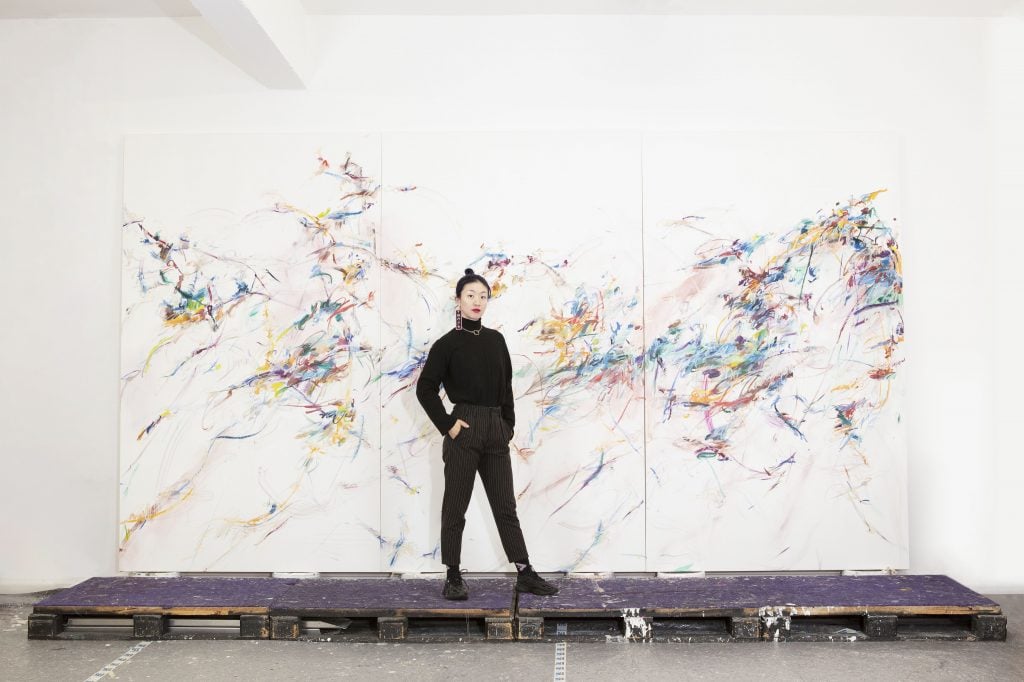
The artist is currently the subject of her debut solo show in Italy with Massimo De Carlo, Milan, on view through August 2.

Artnet Gallery Network

Originally from the municipality of Chongqing, China, and currently living and working in Berlin, artist Xiyao Wang (b. 1992) creates lyrical, immersive, abstract paintings that reflect the mutable boundary between the internal and external. Employing a materially diverse approach to her practice, Wang uses everything from traditional oil and acrylic paint to chalk, graphite, and oil stick, offering the ability to foreground the gestural and physical aspects of her craft within each composition. With a deep understanding and knowledge of both Eastern and Western artmaking traditions, Wang’s work leverages elements of each to create a unique and personal visual lexicon.
And though Wang’s work has been exhibited worldwide, her first dedicated solo show in Italy is currently on view with Milan gallery Massimo De Carlo, “The Blue Hour.” Marking the occasion, we reached out to Wang to learn more about what visitors can expect in this show of recent work, and more about the foundations of her singular practice.
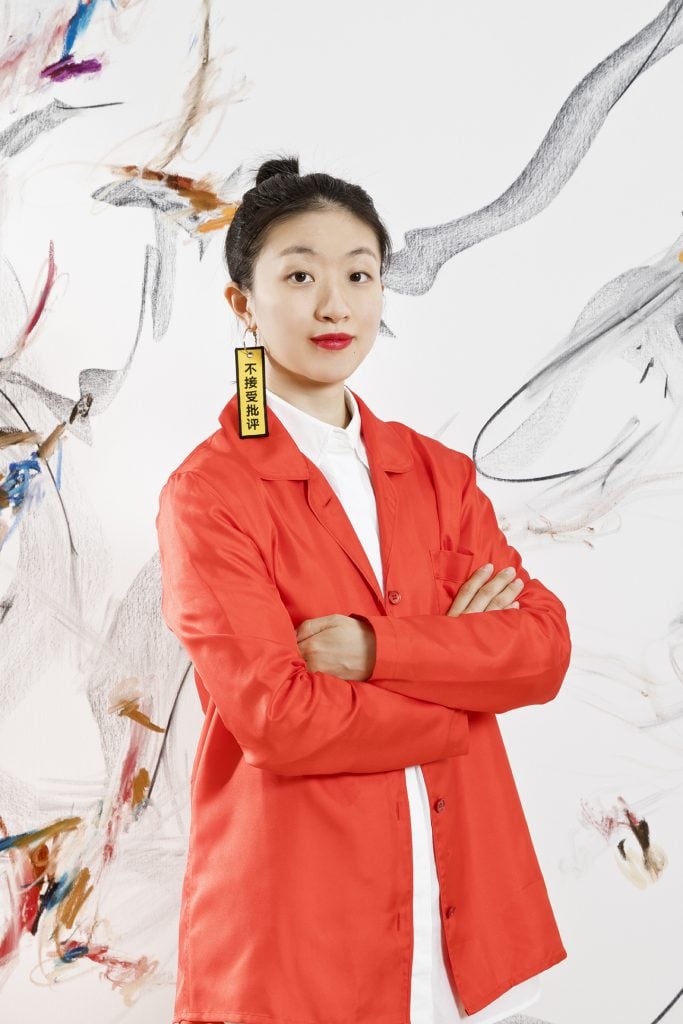
Artist Xiyao Wang. Photo: Perrotin, Seoul. Courtesy of the artist.
Your solo exhibition “The Blue Hour” opens with Massimo de Carlo this month, can you tell us a little bit about what will be on view and any themes or inspirations behind the show?
In Milan, I will show 12 new paintings, including for the first time two very small paintings (80 by 60 centimeters), which is quite unusual for me. Normally, 135 by 125 centimeters is my smallest size, and most paintings are even bigger, up to about seven meters in length. I am always looking for new challenges.
The works in my exhibition represent the various series I have created over one year: from the Zhuang Zi Period (2023–2024) to the Allongé Period (2023–2024) and to The Blue Hour Period (2024).
Most of the paintings are inspired by springtime in Berlin, especially by the blue hour in the evening, after the time of day when I usually start painting.
This exhibition has two different titles, one in English, “The Blue Hour,” and one in Chinese “阳春召我以烟景” (Spring Calls Me with Its Airy Scenery). The Chinese title is derived from a poem by Li Bai—one of my favorite poets from ancient China—in which he celebrates and lives in the fleeting moment.
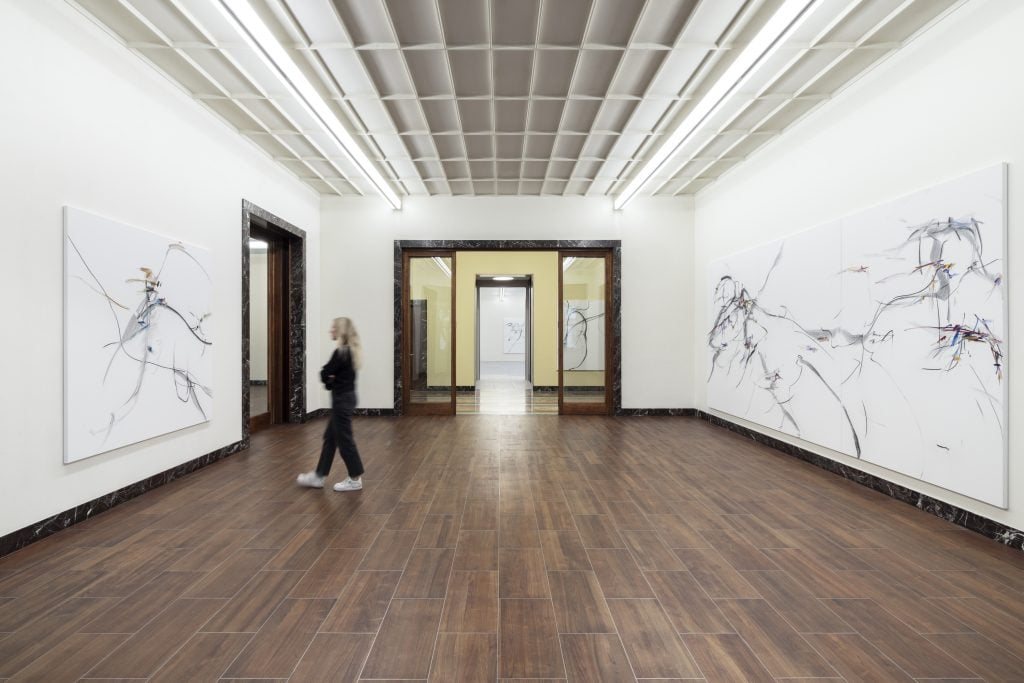
Installation view of “Yiyao Wang: The Blue Hour” (2024). Photo: Roberto Marossi. Courtesy of Massimo De Carlo.
The show marks your debut in Italy, has this moment influenced your work in any way? Or, on a personal level, can you foresee this providing a form of inspiration for the future?
This is my first solo exhibition in Italy, but it’s also my fourth time showing my paintings in the country. All my paintings were created in my studio in Berlin, but they were specifically made and assembled for this exhibition.
For my show, I will go to Milan for a week and afterwards visit the Venice Biennale. Maybe this half month stay in Italy will give me some inspiration for later creations.
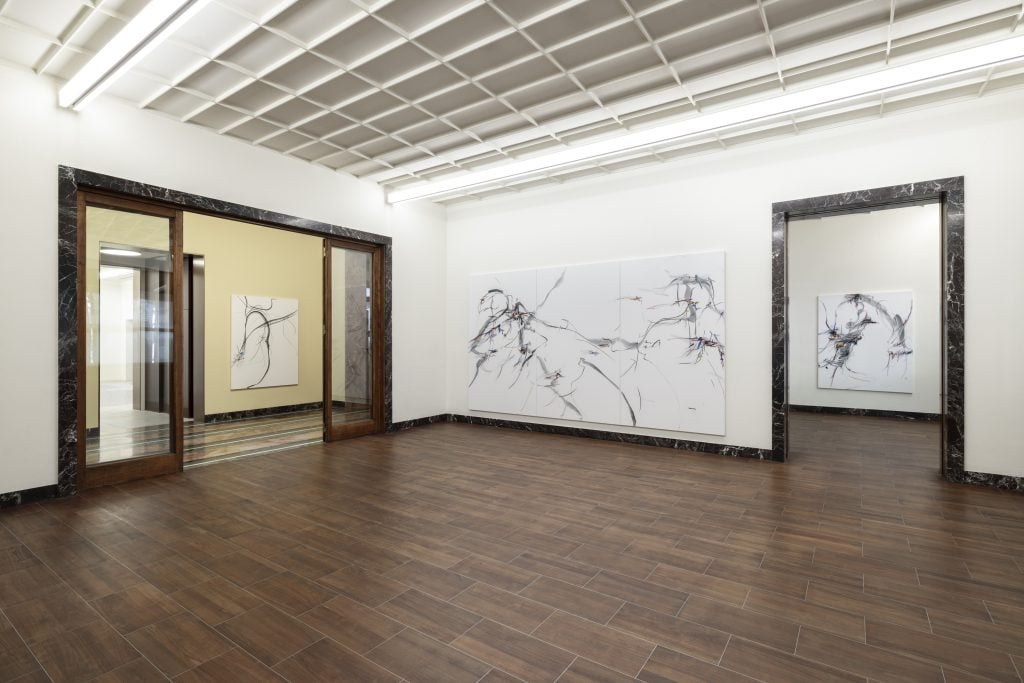
Installation view of “Yiyao Wang: The Blue Hour” (2024). Photo: Roberto Marossi. Courtesy of Massimo De Carlo.
How do you approach or balance Eastern and Western modes and traditions of art making in your practice?
I studied art for more than 10 years in China, Germany, and the U.S.A. During these years of academic life, I studied Eastern and Western art history, from antiquity to contemporary art.
When I was 22, I came to Germany, and I’ve been in this country for a decade now. After having felt such a longing for Western art all those years in China, I was amazed that later, and abroad, I slowly found my way back to the roots of my culture. My art has naturally become a synthesis of an Eastern and Western spirit. In my studio in Berlin, I finally recognized the rich treasure hidden in the millennia-old tradition of my homeland. And within me, this treasure connected with the experiences I had gathered in the world so far.
From a practical standpoint, how would you describe your creative process? Do you have a specific routine or is every day different?
I get most of my inspiration in my studio. The more time I spend there, the more ideas come to mind.
There are a lot of obligations and appointments in my life as an artist. But if I can afford the time, my favorite routine is to start my day with reading, a tea ceremony, and playing the Guqin (Guqin is a traditional Chinese plucked seven-string instrument with thousands of years of history). These things are an important daily ritual for me, they are all part of the preparation for my painting. After five to eight hours of preparation, not until late afternoon or night, I would begin to paint. The whole progress of creation is not only about the painting itself but the preparation, mentally and physically, to get into that “flow” state.
This spring, I was also inspired by the brief moments I was able to spend in nature.
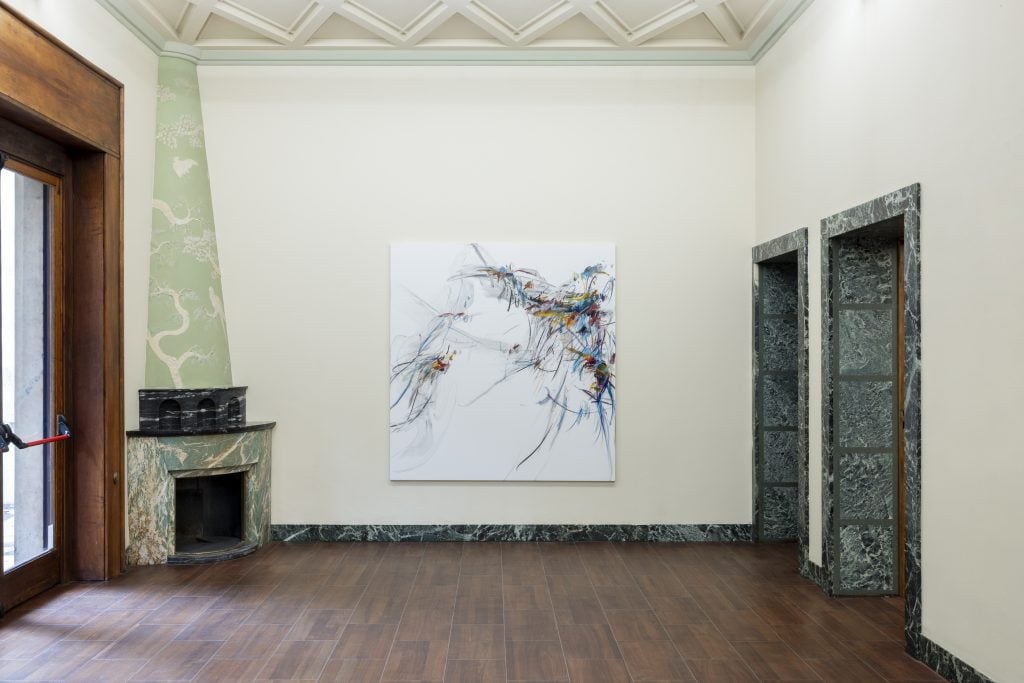
Installation view of “Yiyao Wang: The Blue Hour” (2024). Photo: Roberto Marossi. Courtesy of Massimo De Carlo.
Where do you most commonly look for inspiration? Are there any artists, or even other artistic practices, that have influenced your work the most?
The carefree, natural, and ethereal state without boundaries is actually what I like the most and have always been exploring, seeking, and creating. Anything related to these themes can be a great source of inspiration for me. For example, the different movements like ballet, Kung Fu, walking in the forest, swimming in the sea, reading Zhuang Zi, playing Guqin, and of course, the most inspiring is painting itself, they all make me feel weightless and boundless.
Visiting good exhibitions is also very inspiring, whenever I see great paintings, I immediately have the urge to return to my studio to paint myself. There are many artists who have inspired me. Not only Western contemporary artists, but also ancient Chinese artists.
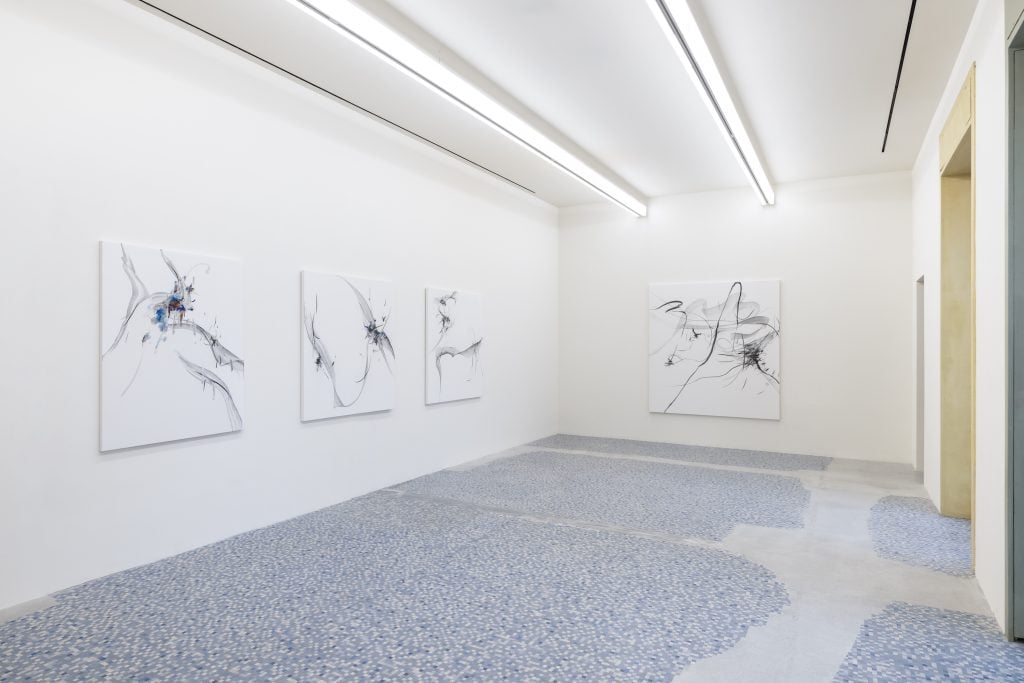
Installation view of “Yiyao Wang: The Blue Hour” (2024). Photo: Roberto Marossi. Courtesy of Massimo De Carlo.
What do you hope that visitors to your exhibition take away with them?
I hope that visitors can feel some of the weightlessness and boundlessness that I want to share with them through my paintings.
What’s next? Are there any projects or ideas you want to work on—or something you are currently working on now that you can tell us about?
After the Milan show, I will continue to prepare for my participation in the Bangkok Art Biennale in October. At the same time, I will have a solo exhibition with Tang Contemporary in Bangkok. I already have some good Thai collectors, but I’ve never been to Thailand—I’m very much looking forward to it.
This summer I will have a group show at “Le Château d’Aubenas,” a medieval castle in the south of France that they have turned into a contemporary art museum, opening July 5, and a group show at Tank Shanghai, one of my favorite art institutions in China.
At the beginning of next year, I will go to Mexico for a solo show there.
“Yiyao Wang: The Blue Hour” is on view at Massimo De Carlo, Milan, through August 2, 2024.